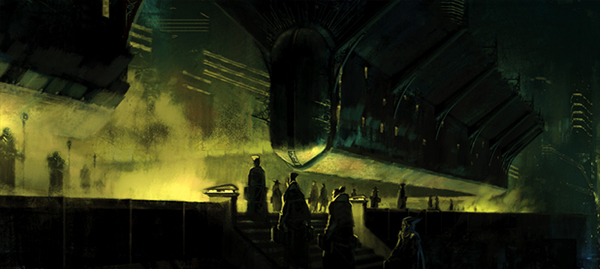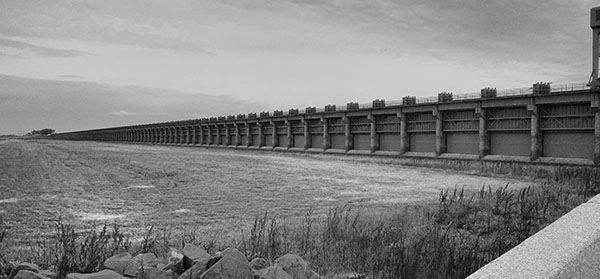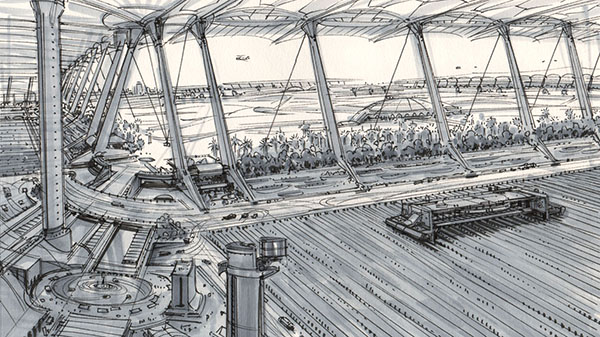Project 1.00 . Narrative

Narrative constructs a framework for exploration that can guide the designer’s hand or package a concept for external audiences. This narrative framework builds the underlying structure for design exploration, aesthetics, media, and positions project within a critical agenda. The concept of narrative can be explored through a variety of means, in the context of digital imagery we will begin to not only capture narrative (site photography) but to also construct it through composite illustration techniques.
Our representational tools create potentials to test design ideas as physical and mental constructs. This project explores the use of narrative through the proliferation of themes surrounding environmentalism, infrastructure, and ecology within Southern Louisiana. It will be important for you to develop a position on each of these topics and the application to the region, culture, and biology.
Using site photography of Louisiana infrastructure illustrate a narrative that states a position on environmentalism, infrastructure, and ecology. How are each of these coming to bear on the Louisiana landscape, a landscape rich with ecological diversity and cultural heritage that is also threatened by resource extraction and climate change.

Site Photography: The first phase will be to capture and process a series of site photographs focusing on Louisiana infrastructure. These photographs will be the basis for your narrative and should be carefully composed and processed/adjusted.
Composite and Illustration: Using the photographs as a base you will composite and illustrate a new narrative. This may be a proposal or a deconstruction but should clearly articulate your narrative through visual methods. Techniques of digital painting, collage, technical illustration, and compositing should be employed to develop a compelling visual narrative.
Deliverables: A triptych of equal panels, 3 A4 illustrations @ 200dpi in PDF format. The three images should be composed as a group and may illustrate a sequence, evolution, single view, or other method of grouping the content. Each sheet should be in a portrait orientation.
Technique Documentation: You will document a technique used in the creation of your triptych. This documentation will be in the form of a blog post on the lab.visual-logic.com site. You should clearly explain the steps necessary to complete the technique as well as document the historical lineage of the technique.

Schedule
September 3rd . Site Photography and Research, Concept Development
September 10th . Landscape as Image, Composite Techniques
September 17th . Diagram and Annotation, Pin-up
September 24th . Deliverables Due, Triptych
October 1st . Technique Documentation Due
Resources
Bldg Blog, Architectural Sci-Fi
Bldg Blog, Science Fiction and the City Film Fest Update!
Reality Cues, your submission may be used for one of the upcoming competitions (optional).
Reality Cues is conducting a series of competitions that will investigate tropes in architectural representation. We will explore the techniques and conventions that architects rely on to communicate ideas concerning space, form and use, with a special concentration on the visualization of contemporary social values systems. By conducting competitions we hope to amass a collection of exemplary tropes, analyze their value, and disseminate them back to be exploited smartly and with precision.
